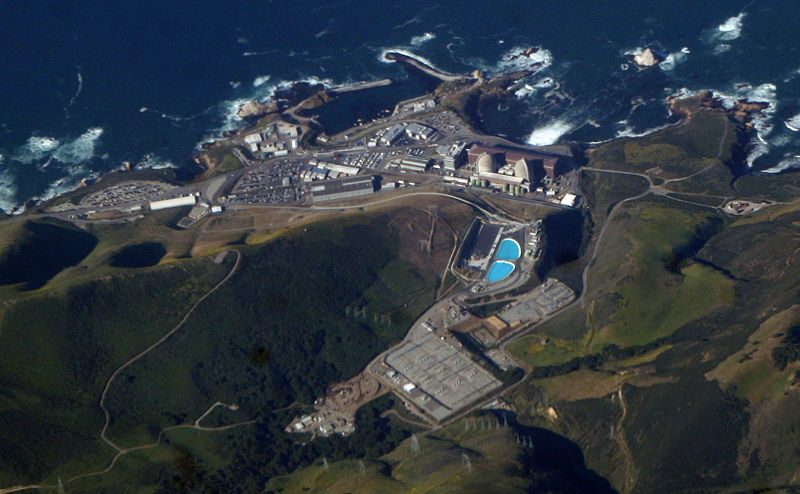Newsom Pushes $1.4 Billion Plan to Extend Diablo Canyon by Up to 10 Years
Without Extension, Nuclear Power Plant in Avila Beach Set to Shut Down by 2025

Governor Gavin Newsom proposed measures to extend the licensed lifespan of Diablo Canyon Power Plant, located in Avila Beach, by up to 10 years in response, he said, to the threat of climate-change-induced power outages. Without this extension, the licenses for the twin reactors of the Diablo Canyon nuclear-powered plant are set to expire in 2024 and 2025, respectively. In addition, Newsom is proposing the State Legislature loan PG&E $1.4 billion from the state’s general fund to underwrite the utility’s costs of license renewal. The measure proposed by Newsom would also suspend the requirements of the California Environmental Quality Act (CEQA).
Newsom has pointed out that Diablo Canyon provides 17 percent of California “greenhouse-gas-free electricity” and 8.6 percent of its total electrical supply. With climate change threatening not just the state’s water supply but its hydroelectric capacity, Newsom contends Diablo Canyon’s lifespan must be extended to prevent brownouts and blackouts.
New clean energy projects, he said, have been hampered by supply chain challenges, meaning that these carbon-free projects will not come online in time — and in the abundance required — to fill the gap if Diablo Canyon were to turn off the lights by 2025.
Beyond that, the state is adopting legislation that requires an aggressive transition to 100 percent zero-carbon electricity by 2045. That too, Newsom has argued, will place further strain on the state’s power grid. In this context, Newsom argues, Diablo Canyon needs to stay operative.
For all this to happen as Newsom suggests, the State Legislature will have to approve the legislation, and PG&E will have to agree to seek a license extension from the Nuclear Regulatory Commission. The real regulatory hurdles, however, exist at the state level; various aspects of the plan would have to be signed off by the California Coastal Commission, the State Lands Commission, the California Public Utilities Commission, and the State Water Control Board.
Sign up for Indy Today to receive fresh news from Independent.com, in your inbox, every morning.
At issue, should it progress that far, will be whether Diablo Canyon should be allowed to continue using its current once-through cooling system, which one member of the Coastal Commission described as the biggest predator of sea life in the ocean. The cooling system sucks up millions of gallons of salt water from the ocean a day and then spits it back out into the ocean at temperatures 20 degrees hotter. In the past, the State Lands Commission allowed PG&E to continue using this outmoded technology — and not make the multibillion-dollar investment needed to replace it — on the assumption that both reactors would be shut down by 2025.
Anti-nuclear activists with Californians 4 Nuclear Responsibility and Mothers for Peace remain opposed to any license extension for Diablo Canyon, arguing that the cost involved — both financial and environmental — will be too high, as will the safety risks.
Congressmember Salud Carbajal, who represents the district that’s home to Diablo Canyon, has objected in the past that Newsom had failed to consult with either him or residents living near the plant before weighing in. Carbajal is currently pushing a massive wind project off the coast of Morro Bay — the largest in the United States — and its viability could be undermined by an extension of Diablo Canyon’s license. The wind project presupposes that the electricity grid located at the Diablo Canyon site would be available to receive the new load of electrical power if Diablo Canyon is shut down. If Diablo Canyon is still operating, it’s not clear to what extent the wind energy would have access to the grid.
Newsom’s bill would extend the plant’s operating licenses in two phases; the first phase would last until 2030. At that point, the legislation has language that would allow PG&E to seek a second five-year extension.
Support the Santa Barbara Independent through a long-term or a single contribution.



